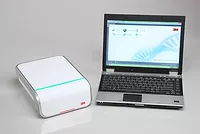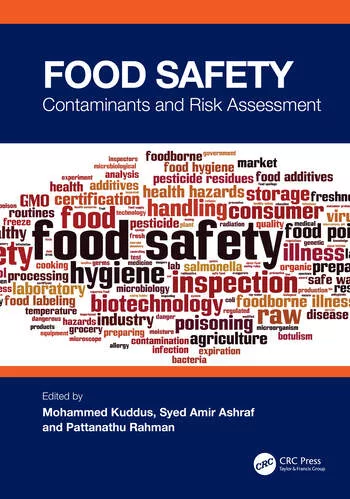Technology Round-Up: New Frontiers in Pathogen Testing

The micro-universe of bacteria can cause a macro-world of problems for food manufacturing and supply chain companies. Avoiding these problems—from public health crises associated with foodborne pathogens to brand-damaging product recalls—means that food companies must stay one step ahead of the bugs to stay in business. New food safety regulations mandating the use of microbial intervention technologies and requiring verification testing, together with a slight upsurge in reported food product contamination in food manufacturing plants, foodservice operations and retail outlets are also spurring the demand for more stringent testing and tracing of food products throughout the food manufacturing and distribution supply chain.
Fortunately, rocket science abounds in the field of rapid and automated detection and identification of microbiological contaminants. Recent innovations in test methods are proving to be the new stars of many food plants’ and food handling operations’ toolboxes. As Food Safety Magazine’s editors have traveled the country this past year, we’ve been introduced to several new and improved technologies and systems designed for use as part of the product testing and process control verification programs used by food processors throughout the world.
A Chromogenic Constellation
Certainly, there has been a boom in the development and creation of rapid and automated test methods to detect and identify foodborne pathogens in product before it leaves the plant. According to a recent review of U.S. federal food recall data conducted by Silliker Inc., the more than 5,000 product recalls documented in the past 20 years show that Salmonella, Listeria monocytogenes and E. coli O157:H7 as the leading microbiological agents implicated in a broad array of foods. Silliker’s review notes that microbiological agents were associated with 38%, or approximately 200 of the 533 U.S. Food and Drug Administration (FDA) recalls in 2004. In 2004, Salmonella spp. was the microbiological agent associated with the largest number of food recalls, followed by L. monocytogenes.
Microbiological agents were cited as the reason for 44%, or 21 recalls, of meat and poultry products regulated by the U.S. Department of Agriculture (USDA) Food Safety and Inspection Service (FSIS), according to the 20-year review data. Recalls due to L. monocytogenes accounted for 61%, or 13, of FSIS recalls due to microbiological agents. E. coli O157:H7 was the second leading cause of FSIS recalls due to microbiological agents. In recent years, FSIS recalls due to E. coli O157:H7 have consistently declined from 21 in 2002, 12 in 2003, to just six in 2004.
While a trend in the decline of infections attributed to these three pathogens from 1996 to 2004 has been reported by FDA and USDA—and credited to industry efforts in implementing enhanced food safety systems and technologies in the plant—some of the significant product recalls in the last few months of 2005 illustrate industry’s continued need for fast, efficient and reliable detection and identification of pathogens on foods and in the plant, including:
• The recall in August 2005 of bagged dried basil contaminated with Salmonella that resulted in the recall of all potentially affected products manufactured by the spice company’s further processor and re-packer customers who received the basil as early as April 2005.
• A July 2005 recall of products containing cake batter ice cream sold by a national foodservice outlet. The product was associated with an outbreak of S. Typhimurium infection in four states from which 14 people reported illness.
• The recall in October 2005 of as many as 245,000 bags of three brands of pre-packaged salad products associated with an outbreak of E. coli O157:H7 in Minnesota in which 11 cases of illness and two hospitalizations were reported.
• An expanded recall in September 2005 involving 184,000 lbs, of frozen ground beef patties (in addition to the company’s August 2005 recall of 900,000 lbs. of beef patties) due to E. coli O157:H7. On individual was hospitalized and a further epidemiological investigation was underway.
• The recall in October 2005 of 40,000 lbs. of bulk red king crab legs and claws distributed to foodservice and retail outlets nationwide between May and August due to the potential of contamination with L. monocytogenes.
Thus, it isn’t surprising that rapid and automated microbial test developers have concentrated on improving methods of detection and identification for these three pathogens. One of the most notable advancements of use to food companies involves the growing availability easy-to-use chromogenic media plates that can differentiate harmful pathogenic species from background flora and other bacterial species. These media plates utilize chromogenic substrates that produce specifically colored colonies associated with target pathogenic species when hydrolyzed by certain enzymes. Since the plates are ready-to-use, strain-specific and generally offer results between 18 and 24 hours after incubation, food companies are able to gain savings in the cost of media and labor while reducing test-and-hold time for product release of non-suspect lots with a high level of confidence.
BD Diagnostic Systems’ (Sparks, MD) BBL CHROMagar Listeria, for example, distinguishes L. monocytogenes and L. ivanovii from other Listeria species by producing a blue-green colony with halo. As with the company’s BBL CHROMagar Salmonella, BBL CHROMagar Listeria was recently validated by the AOAC Research Institute (AOAC-RI) under the Performance Tested Methods Program. It is approved for the analysis of raw ground beef, smoked salmon, lettuce and Brie cheese with FDA Bacteriological Analytical Methods (BAM), USDA FSIS, AOAC and ISO methods. When used in conjunction with these methods, no confirmatory biochemical tests are required. The identification of L. monocytogenes in environmental samples is another useful application of this method.
bioMérieux (Hazelwood, MO) has launched two chromogenic media products of interest to the food industry, SM ID2 Agar, a chromogenic medium for the selective isolation and detection of Salmonella, and O157:H7 ID Agar for the detection and presumptive identification of E. coli O157:H7. The SM ID2 Agar has three chromogenic substrates, and Salmonella colonies, including serotype Typhi, Paratyphi and most lactose-positive, will present pale pink to mauve colonies on a colorless background. The company reports that a large colony size can be seen after an 18- to 24-hour incubation period. The O157:H7 ID Agar may also be used to confirm samples that are screened positive with bioMérieux’s VIDAS ECO and/or VIDAS ICE automated detection systems.
The AOAC-RI validated Microgen Listeria ID, distributed by Microbiology International (Frederick, MD), is a 12-well strip that also utilizes chromogenic agar for rapid confirmation of isolated Listeria species directly from a single colony on a selective isolation plate. This miniaturized biochemical identification system identifies the six members of the genus Listeria—L. monocytogenes, L. innocua, L. ivanovii, L. welshimeri, L. grayi and L. seeligeri—with clearly differentiated color changes (purple or yellow) in 24 hours or less and requires no additional testing. Full biochemical identification is accomplished using Microgen Identification System Software.
Recently, Microbiology International also made available the Microgen ID Bacillus to enable the easy identification of Bacillus and closely related genera commonly implicated as causes of food poisoning and food spoilage but historically difficult to differentiate. The 24 substrates included in the system are housed in a standard microwell format and two separate strips are included for each identification. Results are available in 48 hours.
Bio-Rad’s (Hercules, CA) chromogenic media line includes RAPID’L.Mono for the direct detection and enumeration (without confirmation of colonies) of L. monocytogenes in food products and environmental samples in 48 hours, and RAPID’E.coli 2, a selective medium for the direct identification and enumeration of E. coli and coliforms in 24 hours. No biochemical confirmation testing is required, and each test is easily read.
Paradigm Diagnostics’ new media, PDX-LIB, is designed to provide rapid results for detection of Listeria from environmental samples, which is ideal for processors who do not have reference or corporate labs near and who must ship ready-to-eat (RTE) products within a short time period to conserve shelf life, according to the company. Distributed by Hardy Diagnostics (Santa Maria, CA) and recently earning AOAC-RI approval, the PDX-LIB Listeria Media provides presumptive results for common Listeria species in as little as 30 hours (results cannot be considered negative until samples have been incubated for 48 hours, notes the company). The self-contained unit contains a patented formula of antibiotics, growth enhancers and color-changing compounds. The user simply swabs the surface, adds the PDX-LIB indicator broth to the sample and incubates. A brown to black color indicates a presumptive positive.
The 3M Microbiology (St. Paul, MN) Environmental Listeria plate gives quanitative results in 27 to 31 hours after sample collection, allowing processors to identify hotspots in the plant and to monitor levels of Listeria over time. 3M designed the plates for use as part of an overall control plan against Listeria, enabling processors to pinpoint where to target actions based on monitoring the levels of environmental contamination in different parts of the plant. The sample-ready culture medium requires no enrichment or culture transfers, and detects L. monocytogenes, L. innocua and L. welshimeri as red-violet colonies, but does not differentiate between these organisms.
Astronomical Assays and Automated Systems
Pathogen test kits that utilize lateral flow assay and enzyme-linked immunosorbent assay (ELISA) techniques to speed detection times are being improved to provide greater sensitivity. The Strategic Diagnostics International (Newark, DE) RapidChek screening systems for foodborne pathogens, for example, target E. coli O157, Salmonella, and Listeria species. With its single-step enrichment and a proprietary protocol for direct confirmation from these lateral flow devices, SDI’s RapidChek screens provide results in as little as eight hours and 10 minutes for E. coli 0157, 24 hours and 10 minutes for Salmonella, and 40 hours and 15 minutes for Listeria species. Both validated by AOAC-RI, the RapidChek for E. coli O157 and Salmonella can each detect one cell in 25 grams (in ground beef, boneless beef and apple cider, and in meat, poultry and processed food, respectively). Independent studies demonstrate that the media is able to resuscitate injured cells while suppressing competing background flora, providing greater sensitivity and fewer false positives.
Neogen Corp.’s (Lansing, MI) GeneQuence rapid pathogen detection system utilizes a novel DNA hybridization technology which assays for Salmonella, Listeria spp., L. monocytogenes, and E. coli O157:H7. Each test kit, developed to detect 1-5 CFU/25 g sample in less than two hours, uses two specific DNA elements to ensure specificity. By coupling this technology with an automated plate handling unit, states the company, it is possible test more than 700 samples in an eight-hour work day with very little hands on time.
Centrus International Inc. (Kingsport, TN) launched the new Envisio test system last year, which uses a 7.25-hour enrichment, a simple lateral flow immunoassay step, and an automated analysis using magnetic detection technology for the determination of presence of the target pathogen. The inherent sensitivity of the magnetic detection system lowers the detection threshold for the assay resulting in shorter enrichment times and decreased time-to-result. Data is automatically interpreted and printed, eliminating subjectivity of visual analysis and reducing potential for recording errors. In comparison study results released this summer, the company reported that the Envisio system exhibited equal or greater sensitivity and specificity and with a decreased time to result than the USDA-FSIS reference method for detecting E. coli O157:H7 in raw beef.
Automated pathogen detection and identification took a new leap this year with the introduction of Centrus’s Soleris Connectivity software, which is designed to speed the flow of vital test results from the lab to food, meat, dairy, beverage and nutraceutical processors to make faster, better-informed decisions regarding product safety and release. For use with the Soleris rapid optical system (formerly BioSys), the software provides secure, real-time test results and data to an unlimited number of approved network users, and can be adapted to interface with specific Laboratory Information Management Systems (LIMS). Contamination alarms can also be sent securely through traditional and cellular phone systems. The test results can be monitored from remote locations connected through any existing communication line, further speeding the flow of essential information.
AES-Chemunex, Inc.’s (Princeton, NJ) BactiFlow, the compact microbial analyzer designed for routine applications in food and beverage microbiology, now offers Salmonella detection capability along with total viable counts, yeasts and molds and spores. The system performs microbial analysis in minutes (direct counting within one minute of labeling, presence/ absence test results within 24 hours) and is sensitive to fewer than 100 cells per gram. The BactiFlow is specifically designed for the rapid analysis of dairy, fruit juices, soft drinks, water and other beverages.
Molecular Lightspeed
Molecular technology, or DNA-based detection, is one of the fastest growing areas in rapid pathogen test system development. In 2005, BioControl Systems, Inc. (Bellevue, WA), became the first manufacturer to develop a DNA-based E. coli O157:H7 assay and a Shiga Toxin genes assay to successfully complete the rigorous AOAC Official Method validation process. E coli O157:H7 and Shiga Toxin genes (STX1 and STX2) are the first assays to be developed on the Assurance GDS platform. Additional assays for Salmonella, Listeria and L monocytogenes are currently in the final stages of development.
BioControl developed the the genetics-based technology to help processors, particularly those making perishable product, improve testing speed to result in an era of test-and-hold requirements. Assurance GDS for E coli O157:H7 is designed to provide results in a single eight-hour shift, and the companion Shiga Toxin genes assay specifically measures the presence of Shigatoxin genes in samples containing E coli O157:H7. The assays utilize immunomagnetic separation, highly specific primers and a patented Probe system to ensure accuracy, along with the Assurance GDS Rotor-Gene, an innovative multi-channel rotary cycler for the amplification and detection of the targets. The Rotor-Gene can read multiple, distinct targets, which eliminates the need for melt curves that can be difficult and time-consuming to interpret.
Rapid detection of Salmonella, L. monocytogenes and E. coli O157:H7 through automated polymerase chain reaction (PCR) systems is well established. In 2005, two companies introduced PCR assays for the detection of Campylobacter strains. Camplyobacter has been identified as a leading cause of foodborne illness on a global scale and is found primarily in poultry, meat and untreated water. In September, Warnex Inc. (Laval, QC) launched a new test for the detection of Campylobacter jejuni, C. coli and C. lari in poultry rinses for use with the Warnex Rapid Pathogen Detection System. Warnex’s Campylobacter test detects the three species of this pathogen, which account for 99% of reported Campylobacter cases. The real-time PCR system can determine the presence of the pathogen within 48 hours. Warnex is also currently completing the development of a quantitative test that will determine the amount of Campylobacter present in a sample, which it intends to commercialize during the first quarter of 2006.
DuPont Qualicon (Wilmington, MD) introduced the BAX System PCR Assay for Screening Campylobacter jejuni/coli, which when tested on poultry carcass rinses after a 24-hour incubation, yielded results with 99% specificity and sensitivity as low as 10 CFU/30 mL in approximately five hours.
Julie Larson Bricher is Editorial Director of Food Safety Magazine.
>
Looking for quick answers on food safety topics?
Try Ask FSM, our new smart AI search tool.
Ask FSM →







